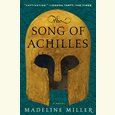Memphis, Key to the Mississippi
Edward B. McCaul Jr. examines the Civil War struggle for control of the Mississippi River
In To Retain Command of the Mississippi: The Civil War Naval Campaign for Memphis Edward B. McCaul Jr. argues that the battle at Memphis was in many ways the pivotal conflict of the western campaign and yet is largely overlooked in many Civil War histories because it was over so quickly and resulted in relatively light casualties.
 The first two thirds of the book cover the (river) road to Memphis. Before the war, there was almost no military presence on the western rivers. When war broke out, both sides recognized the strategic importance of the waterways and scrambled to create a military presence there, mostly by acquiring civilian steamboats at first. The Union also built a fleet of massive, slow, iron-clad gunboats while the Confederacy, with its more limited industrial capacity, struggled to refit the collection of tugs, passenger, and cargo boats they managed to assemble.
The first two thirds of the book cover the (river) road to Memphis. Before the war, there was almost no military presence on the western rivers. When war broke out, both sides recognized the strategic importance of the waterways and scrambled to create a military presence there, mostly by acquiring civilian steamboats at first. The Union also built a fleet of massive, slow, iron-clad gunboats while the Confederacy, with its more limited industrial capacity, struggled to refit the collection of tugs, passenger, and cargo boats they managed to assemble.
Nobody had much experience with river warfare. The army command on both sides regarded the rivers, like the railroads, as essential for troop movement and supply, insisting on their own right to identify strategic objectives. Yet boats were involved, so both navies naturally had an interest, too, though their experience was limited to “blue water” sailing vessels, and not “brown water” steamboats. McCaul navigates the competing military interests and rivalries as the Union and Confederacy organized their riverboats into fighting forces, sorted out commands, and tried to recruit qualified men wherever they could find them. The problem: soldiers typically knew little of boats while civilian boatmen knew little of gunnery. In desperation, Union commanders sometimes accepted incarcerated deserters or troublemakers.
 The Union flotilla of six new gunboats was supplemented with lightly armed and much faster rams under a largely independent command. As Union forces came down the river toward Memphis, they had to face a fleet of Confederate rams led by volunteer riverboat pilots under loose army direction. The several battles at Confederate forts between Cairo and Memphis were inconclusive and confused. Both sides lost boats, suffered casualties, and claimed victories. At Plum Point, about sixty direct miles north of Memphis, Union forces took some bad hits.
The Union flotilla of six new gunboats was supplemented with lightly armed and much faster rams under a largely independent command. As Union forces came down the river toward Memphis, they had to face a fleet of Confederate rams led by volunteer riverboat pilots under loose army direction. The several battles at Confederate forts between Cairo and Memphis were inconclusive and confused. Both sides lost boats, suffered casualties, and claimed victories. At Plum Point, about sixty direct miles north of Memphis, Union forces took some bad hits.
A few days later at Memphis, the outcome was by no means a foregone conclusion. But Union commanders were lucky in a variety of tactical ways. They also had learned from their experience, knew what to expect, and were prepared. The Confederates found themselves short of coal and forced to engage in a narrow channel. Many of their boats were deeper draft than the Union boats, which limited their maneuverability. The result was a decisive Union victory that eliminated the Confederate river defense fleet as a threat.
Full control of the river, securing unmolested Union commerce and military movement, came only after the fall of Vicksburg and the taking of Fort Hudson in July, 1863, more than a year later. Nonetheless, McCaul argues that a Confederate victory at Memphis would have marked a turning point in the war: “The potential ramifications of a decisive Confederate victory at Memphis include surrender of the Union Army at Chattanooga and possible Confederate independence due to Union war weariness,” he writes.
McCaul provides excellent battle maps showing the locations of individual boats, and he steps through the individual battle engagements by drawing on a variety of often conflicting sources. This is a scholarly treatment, bristling with references and analyses of sources, in which the battle at Memphis finally receives the serious attention it deserves.

Ralph Bowden, who holds a Ph.D. from the University of North Carolina, has worked as an electrical engineer, history professor, home builder, alternative-energy consultant, and technical writer. A former resident of both Knoxville and Chattanooga, he lives in Cookeville.


